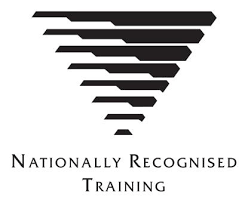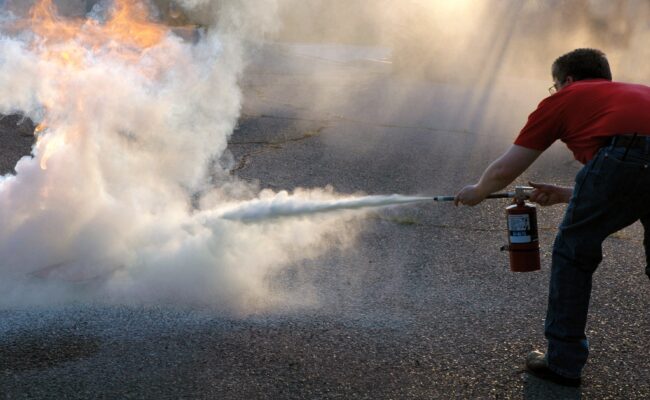

Our Chief Warden Training course is designed for those who lead during workplace emergencies—such as Chief Wardens, Deputy Chief Wardens, and senior staff.
This 5-hour course includes the 3-hour Fire Warden training, followed by an additional 2 hours focused on Chief Warden responsibilities. Participants will learn how to manage an emergency, lead the Emergency Control Organisation (ECO), make critical decisions, and coordinate with emergency services.
Training includes reviewing emergency plans, inspecting the facility, and coordinating a live evacuation drill. When delivered onsite, the drill can also satisfy your annual fire evacuation requirement under Queensland legislation.
Nationally recognised units of competency:
- PUAFER005 – Operate as part of an emergency control organisation
- PUAFER006 – Lead an emergency control organisation
Available Dates
Townsville Training
Bayswater Road, Garbutt, Townsville, QLD 4814
7:30am – 1:30pm 26th August 2025
7:30am – 1:30pm 9th September 2025
7:30am – 1:30pm 29th September 2025
Course Details
This course builds on the foundational skills covered in our Fire Warden Training (click here) and is designed for those appointed as Chief or Deputy Chief Wardens—responsible for leading emergency responses and ensuring occupant safety.
In addition to core Fire Warden content, participants will develop skills to:
- Understand the responsibilities of senior emergency roles
- Coordinate evacuations and emergency responses
- Communicate effectively with internal teams and emergency services
- Review and implement emergency procedures
- Support emergency planning and post-incident recovery
Aligned with Queensland WHS legislation and AS 3745-2010, this course ensures Chief Wardens are prepared to lead as part of the Emergency Control Organisation (ECO).
Practical, activities include:
- Preparing for an emergency – Inspect the workplace, identify issues that could impact evacuation, and complete a Fault Log Entry
- Pre-emergency planning – Update the ECO register and integrate a new Area Warden
- Responding to an emergency – Simulate a live scenario as Chief Warden, using an Evacuation Diagram to coordinate the response
Ideal for those currently in, or stepping into, senior emergency roles—and for workplaces needing reliable leadership coverage.
This course is ideal for workers who have been nominated or appointed as a Chief Warden or Deputy Chief Warden within their workplace. It is designed for those responsible for leading the emergency response, coordinating with emergency services, and ensuring the safety of all occupants during workplace emergencies.
If you’re part of a smaller organisation, we recommend completing Chief Warden training (rather than Fire Warden only), as you may not have a full warden/ECO structure in place—meaning Chief Wardens often take on multiple emergency roles.
We also encourage training more than one person in the Chief or Deputy Warden role to ensure adequate coverage during staff absences, leave, or shift changes. Having multiple trained leaders enhances your workplace’s readiness and resilience.
Training is delivered face-to-face by experienced, qualified trainers. Delivery options include:
- Public Courses – Held at our training facilities in Brisbane and Townsville.
- Client-Only Courses – Delivered onsite at your workplace (group bookings)
We offer flexible scheduling and can tailor delivery to suit your needs—please contact our team to discuss.
There are no pre-course or post-course requirements. All assessment activities are completed during the training session.
Upon successful completion, participants will receive a nationally recognised Statement of Attainment for:
- PUAFER005 – Operate as part of an emergency control organisation
- PUAFER006 – Lead an emergency control organisation
Certificate delivery:
- Courses at our facilities: Certificates are issued on the day, with digital copies emailed to participants and employers (if applicable) the following business day.
- Courses at client sites: Certificates are issued within 7 business days, with digital copies emailed to participants and employers.
There are no formal entry requirements.
If any additional learning support is required (e.g. with language, literacy or numeracy), please notify our Operations team prior to the course or speak with your trainer on the day—we’re here to help.
- Your USI (Unique Student Identifier) – click here for more info
- Comfortable, practical clothing is recommended (long pants or shorts and a sleeved shirt or t-shirt)
- No PPE/high-vis required
- Closed-in shoes
- All course materials are provided
Amenities at Our Brisbane and Townsville Facilities:
- Parking available on-site or nearby
- Complimentary tea, coffee, biscuits, and mints
- Fridge and microwave available for use
- Cafés and food options located nearby for breaks
Frequently Asked Questions
A Chief Warden manages an emergency response including ensuring the workplace is prepared to respond, taking command and being the decision maker in emergency proceedings, being a warden, communication with other wardens, ensuring emergency procedures are followed and liaising with emergency services.
A Chief Warden must also manage post-response duties including retaining control until emergency services relinquish their control and debriefing.
The ECO shall consist of a chief warden or equivalent as a minimum.
The Building Fire Safety Regulation 2008 (Qld) does not specifically mention the title Chief Warden, but it does require workplaces to have a compliant emergency evacuation plan and to appoint trained evacuation coordinators.
In practice, the Chief Warden is the person who takes overall control during an evacuation—making the role essential for meeting legal obligations under standard emergency structures.
How do I know if my workplace needs a Chief Warden?
If your workplace has multiple occupants, operates across several levels or zones, or involves higher-risk activities, then a Chief Warden is strongly recommended.
The need for a Chief Warden is supported by:
- Building Fire Safety Regulation 2008 (Qld) – Requires trained evacuation coordinators
- AS 3745-2010 – Planning for emergencies in facilities – Recommends a Chief Warden lead the Emergency Control Organisation (ECO)
Rule of thumb: If your workplace needs Fire Wardens, it also needs someone to lead them—that’s the Chief Warden.
Yes. All workplaces must have a compliant emergency plan and trained personnel. In smaller workplaces, the same person often performs multiple roles.
We recommend completing Chief Warden Training (PUAFER006, includes PUAFER005) to ensure you're prepared to lead during emergencies—particularly if no broader warden team is in place.
- Under the Building Fire Safety Regulation 2008 (Qld), workplaces must have an emergency evacuation plan and appoint responsible people to coordinate evacuations. In most emergency structures, this includes a Chief Warden to take overall control during an emergency.
- Fire Wardens are responsible for coordinating evacuations within their designated area (such as a floor or zone), assisting occupants, and reporting to the Chief Warden.
- The Chief Warden leads the overall emergency response, coordinates the actions of all wardens, communicates with emergency services, and ensures the site is safely evacuated.
Chief Warden Training is delivered as a 5-hour course. The first 3 hours cover the Fire Warden component (PUAFER005), followed by an additional 2 hours focused on the Chief Warden responsibilities (PUAFER006).
Training includes both theory and hands-on activities such as facility inspections, emergency planning exercises, and a simulated evacuation scenario.
A Chief Warden is the person responsible for taking control during a workplace emergency. They lead the emergency response, coordinate the actions of wardens, make critical decisions, and communicate with emergency services.
Under Australian Standard AS 3745-2010, the Chief Warden plays a key leadership role within the Emergency Control Organisation (ECO), ensuring the safety of all occupants before, during, and after an emergency.
WorkSafe Connect’s Chief Warden Training equips participants with the practical skills and knowledge to perform this role confidently and in line with legislative and industry requirements.
